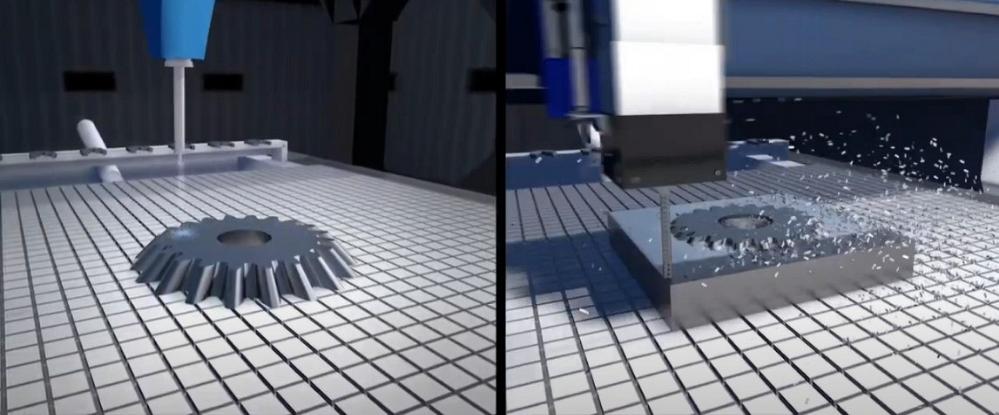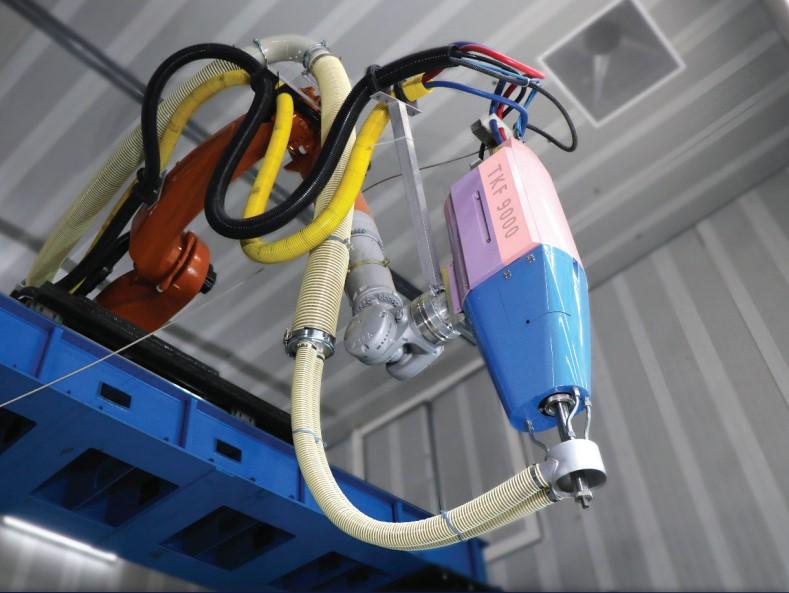- FMA
- The Fabricator
- FABTECH
- Canadian Metalworking
Our Publications
Categories
- Additive Manufacturing
- Aluminum Welding
- Arc Welding
- Assembly and Joining
- Automation and Robotics
- Bending and Forming
- Consumables
- Cutting and Weld Prep
- Electric Vehicles
- En Español
- Finishing
- Hydroforming
- Laser Cutting
- Laser Welding
- Machining
- Manufacturing Software
- Materials Handling
- Metals/Materials
- Oxyfuel Cutting
- Plasma Cutting
- Power Tools
- Punching and Other Holemaking
- Roll Forming
- Safety
- Sawing
- Shearing
- Shop Management
- Testing and Measuring
- Tube and Pipe Fabrication
- Tube and Pipe Production
- Waterjet Cutting
Industry Directory
Webcasts
Podcasts
FAB 40
Advertise
Subscribe
Account Login
Search
Australian 3D printing company Titomic partners with Boeing to test process for producing space components
- January 7, 2022
- News Release
- Additive Manufacturing

Titomic says its additive manufacturing process (left) cuts waste 80% compared to subtractive manufacturing methods.
Boeing has signed an agreement to collaborate with Australian additive manufacturer Titomic Ltd. to investigate the use of “green” titanium to manufacture lightweight, spaceworthy components.
The terms of the agreement call for Boeing to provide the designs and engineering expertise that will enable Titomic, located near Melbourne, to demonstrate its patented Titomic Kinetic Fusion (TKF) technology.
Click HERE to see TKF in action.
Boeing Defence Australia’s director of aerospace engineering and production, Paul Watson, said, “Demonstrating that additive manufacturing technology, or large-scale 3D printing, using green titanium produces highly resilient, lightweight components will have broad-ranging application across the space sector.”
The use of green titanium for AM applications is a potential game changer, agreed Titomic. The refractory metal is readily available in Australia, considered more environmentally sustainable than alternatives, and provides significant time and cost savings by eliminating the need for extensive raw-mineral processing.
Titomic claims TKF technology, compared to subtractive manufacturing technologies, cuts waste by 80%. It also allows fusing dissimilar metals so manufacturers can exploit the strengths of multiple metals in a single part.
Titomic developed TKF with Australia’s Commonwealth Scientific and Industrial Research Organisation. The material-jetting process involves accelerating 5- to 105-micron metal particles to supersonic speeds by injecting them into a gas stream (see illustration). The particles exit a spray nozzle and upon colliding with the substrate they plastically deform, sticking to the substrate and each other. The build-up of these particles rapidly yields a near-net-shape metal part that is precision-machined to final dimensions.
Titomic reports that the TKF process results in 5% to 10% waste material compared with up to 90% waste with subtractive methods.
Besides titanium and titanium alloys, a standard or bespoke TKF manufacturing system can print parts from steel, copper, Invar, Inconel, nickel, and magnesium.
Titomic’s TKF service bureau houses a suite of manufacturing systems, including the TKF 9000 and TKF 1000 3D printers. The customized 9000 has a build envelope of 9 by 3 by 1.5 m and a shuttle-load capacity of 5,000 kg. The autonomous robotic production line is an on-demand system for additively manufacturing load-bearing structures and applying specialty surface coatings.
The TKF 1000 is a modular system engineered to support a range of low-to-midsize production jobs. The off-the-shelf, turnkey 1000 has a build envelope of 1 by 1 by 1 m, 6-axis robotic maneuverability, a sound-dampening enclosure, and an integrated dust extractor. It has a load capacity of 1,000 kg and a footprint of 6.5 by 4.3 by 3 m.
This report is based on information prepared by Boeing Australia and Titomic.
- Podcasting
- Podcast:
- The Fabricator Podcast
- Published:
- 04/16/2024
- Running Time:
- 63:29
In this episode of The Fabricator Podcast, Caleb Chamberlain, co-founder and CEO of OSH Cut, discusses his company’s...
- Trending Articles
- Industry Events
16th Annual Safety Conference
- April 30 - May 1, 2024
- Elgin,
Pipe and Tube Conference
- May 21 - 22, 2024
- Omaha, NE
World-Class Roll Forming Workshop
- June 5 - 6, 2024
- Louisville, KY
Advanced Laser Application Workshop
- June 25 - 27, 2024
- Novi, MI


























